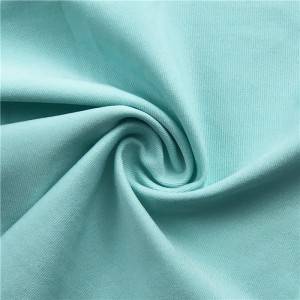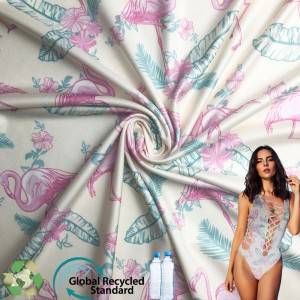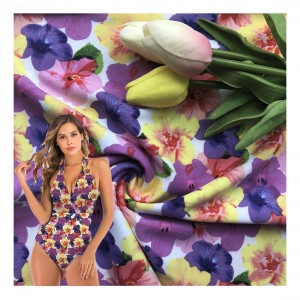Different types of swimsuit fabrics
Natural swimwear fabric
Natural fibres such as cotton and wool tend to deform when wet. They dry slowly and usually store large amounts of water. This makes them heavier than synthetic materials and less practical. Definitely not a good choice of bathing suit fabric. Unless the buyer’re just planning on hanging out in the sun chair, it looks great! Therefore, Kuanyang will exclude natural fibres from the discussion. In general, natural fibers are not a good choice for swimsuits. If the buyer need natural fibers for the buyer swimwear design, please feel free to contact Kuanyang directly with any questions.
Polyester swimsuit blend fabric
Polyester swimsuit fabric, blended lycra (or spandex), has maximum level of durability. However, elastic polyester is a very common category. There are hundreds, if not thousands, of different blends of fabrics from different mills. For each type, the blend ratio of polyester to spandex varies to a certain extent. Knitted fabrics also vary in density and softness. The difference in quality is largely related to the quality of the filaments used in textile mills to make fabrics. As a result, the buyer’ll find a big difference in the look and feel of polyester
When the buyer look at blended swimsuits, the buyer’ll often see the words “Lycra,” “Spandex,” and “Spandex.” What’s the difference between Lycra and spandex? A piece of cake. Lycra is a trademark of DuPont. Anything else is a generic term. They all mean the same thing. Functionally, the buyer won’t notice any difference between these three or any other brand of stretch swimwear.
The quality of polyester swimsuit fabric
The most relevant quality of polyester for swimsuit fabrics is:
Durability: Polyester is a very durable fiber. It holds a good shape both in and out of water. It fights pilling (pills that appear in the crotch and armpits). This is a common problem in surf swimsuits, which often come in contact with the surfboard
Colour fastness: Polyester holds its color well in dyes and prints.
Cost: Polyester is a reasonably priced fabric for swimwear
Look/Feel: Polyester has a bad reputation for its rough feel. However, this idea is a little outdated. Modern polyester fabrics have improved significantly and become quite soft, although not as soft as nylon.
Digital printing: Polyesters can be digitally printed by sublimation. Colors will be bright, saturated, clear and permanent. Sublimation dyes and machines are specifically designed for polyester.
Polyesters are easily recycled and come from a variety of sources. “Post-consumption” refers to polyester from recycled sources, such as plastic bottles, carpets, and other plastic sources. So, if a fabric claims to be “100% post-consumption” recyclable, that means that all the materials used to make the filament of the fabric come from scrap. It’s the most environmentally friendly option.
Post time: Mar-09-2021



